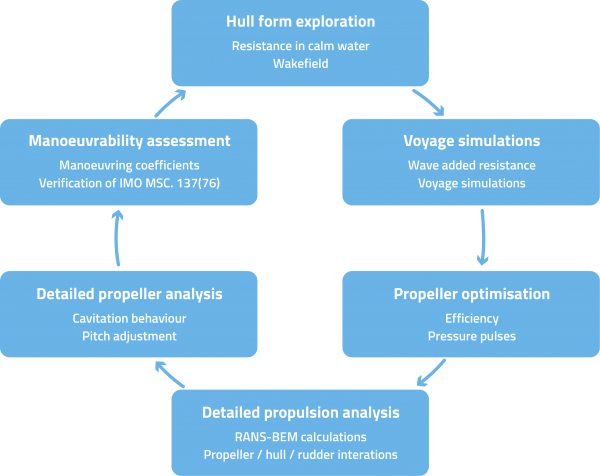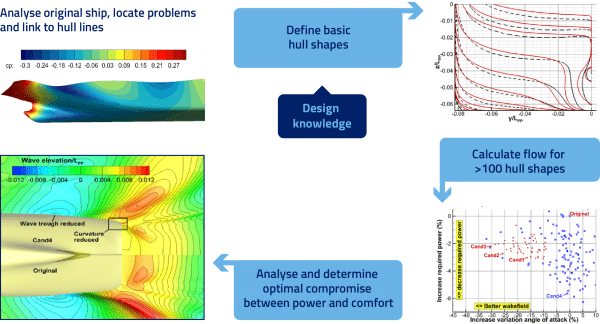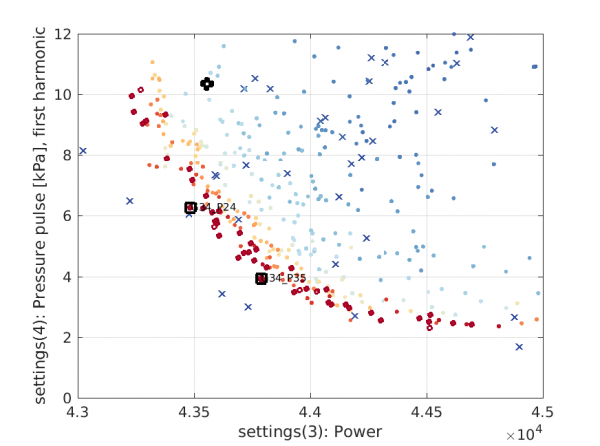Optimisation for an operational profile
A very interesting change we have seen in the past few years is a growth in the number of optimisation projects we perform to match operational profiles. Vessels are no longer optimised for design draught and contract speed, but for the expected operational profile of the vessel.
At MARIN, we integrated some of our tools to support the design for operational conditions, and we have successfully applied this hull optimisation technique several times. The hull is optimised for calm water conditions, but also for typical weather conditions on the envisaged routes. At the same time, we are maximising propeller efficiency within reasonable propeller induced hull pressures and non-erosive cavitation (Figure 1).
Hull optimisation
First, the hull form is optimised for both resistance and the nominal wake field. The initial hull form is optimised for pressure distribution over the hull, wave making and the nominal wake field using our RaNS code ReFRESCO. Calculations are done for a given operational profile and Design of Experiment techniques are used for systematic hull form variations to determine the best hull (Figure 2).
Using an actuator disc, the propeller action will be mimicked to estimate the propellerhull interaction. The performance of the hull will be predicted using a systematic propeller series such as the Wageningen B-series and F-series.
Voyage simulations
For a few potential hull candidates, wave added resistance calculations will be made using our Rankine source potential flow code SEACAL to determine the so-called Quadratic Transfer Functions (QTFs). RaNS calculations are also made to fine tune the SEACAL computations.
The QTFs derived will be used to run voyage simulations (including weather routing) for a weekly departure (around 500 voyages) using 10 years of weather data. From these simulations, the total required energy, fuel consumption and exhaust gas emissions to sail at a constant speed or constant power are then derived.
Propeller optimisation
For promising hull forms, a propeller is optimised for efficiency and pressure pulses using our PropArt code. For each selected hull form RANS-BEM computations are done to investigate the propeller-hull and propeller-rudder interactions. The resulting propeller efficiency and propeller-hull interaction coefficients are used to determine the propulsive power in calm water and during the voyages for the operational profile.
Maximising profit
The selected hull and propeller are then used to assess the manoeuvring performance of the ship by verifying the compliance with IMO criteria. Captive CFD calculations are carried out to derive the manoeuvring coefficients of the hull. Based on the resulting mathematical model, time-domain zig-zag and turning circle simulations are performed with aNySIM and these results are verified against the IMO criteria.
All the previous steps are carried out in a loop, so the final hull is found in an iterative way, ensuring the best possible hull and propeller for the given operational profile and route, ultimately leading to the highest possible profit for the owner.
Patrick Hooijmans | p.hooijmans@marin.nl




